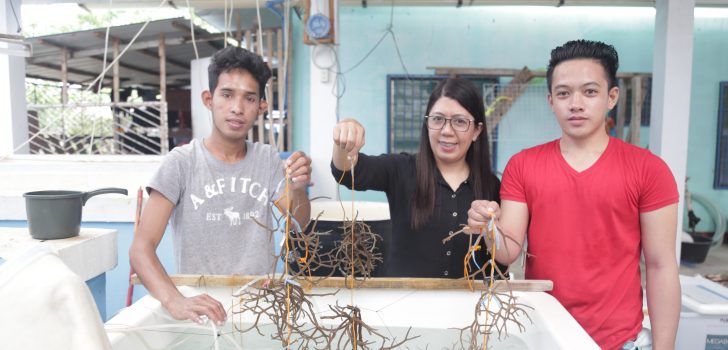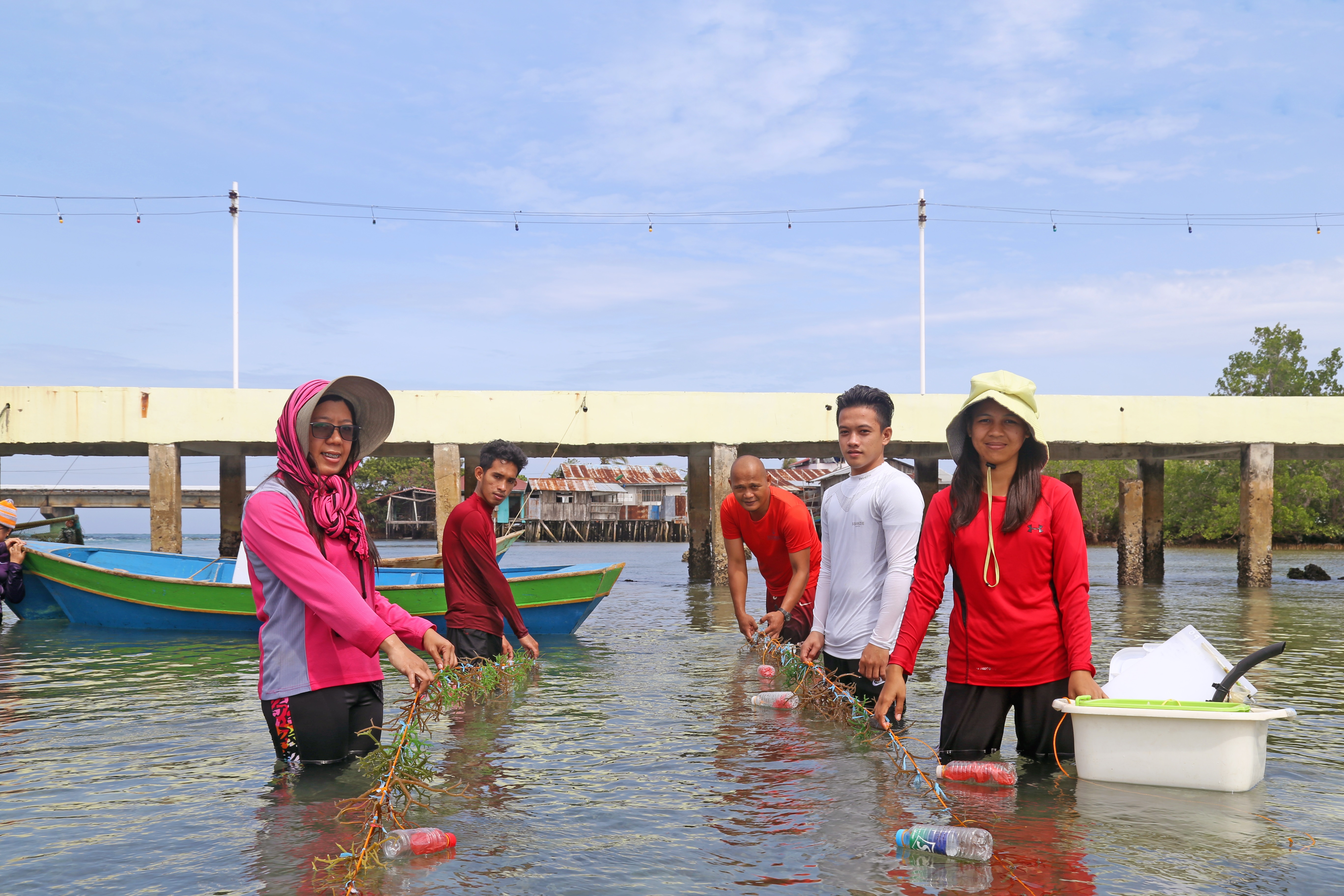 Karen Joy Serag professor showing one of their seaweed cultivars in their land-based nursery (Photo by Joseph John Palarca/PSO Min)
Karen Joy Serag professor showing one of their seaweed cultivars in their land-based nursery (Photo by Joseph John Palarca/PSO Min) Better Lives Through Convergence
The Philippines is the world’s third largest producer of aquatic plants which include seaweeds second only to China and Indonesia. Of the country’s fishery exports, seaweed ranks second only to tuna. Carrageenan, the ingredient derived from seaweed is the country’s major export to USA, China, Belgium and Mexico and is important for its many uses in food processing, medicine and cosmetics.
In the Bangsamoro Autonomous Region in Muslim Mindanao or BARMM, seaweed is one of the top commodities where the province of Tawi-Tawi is the number one producer.
“We have identified three priority commodities in Tawi-Tawi through our value chain analysis (VCA) but for now we are focusing on seaweed because while Tawi-Tawi used to be the number producing province in the country, problems such as “ice-ice” disease and low-quality planting stock have affected overall seaweed production,” explained Keise Usman the Director of Operations of BARMM’s Ministry of Agriculture, Fisheries and Agrarian Reform (MAFAR). “The aim is to help improve the lives of seaweed farmers here in Tawi-Tawi.”
To this end, PRDP’s I-PLAN component collaborated with the Mindanao State University in Tawi-Tawi to provide disease resistant and high yielding seaweed planting material in an effort to boost the productivity of seaweed farmers in the region.
“This project is funded by I-PLAN under sub-component 1.2,” says Cerenio Tila, I-PLAN head of the Philippine Support Office Mindanao (PSO Mindanao). He continues, “Sub-component 1.2 is implementing area-based technical services delivery as a part of synergistic partnership with other agencies to provide support to enhance technical services to target industries.”
The project which started in September 2018 is headed by Karen Joy Serag professor at MSU Tawi-Tawi’s Institute of Oceanography and Environmental Science and technical assistant of the university’s seaweed cultivars lab.
“Since starting last year, we have already been able to produce micro-propagules (seaweed planting stock) some of which have been transferred to our land-based nurseries while some have already been out-planted to target farming communities,” Serag explains.
After a 5-month period of tissue propagation in the laboratory, seaweed planting stocks are transferred to land-based nurseries where they will be allowed to grow further for another 3-4 months. From here, the seaweed planting material are transferred to sea-based nurseries where they will be closely monitored in terms of growth and survivability.
Serag adds, “While the project is still in the study stage, we hope that the seaweed stock we produce here will be used to help the seaweed farmers in Tawi-Tawi.”
One year after starting the project, representatives from the I-PLAN component of PRDP, BARMM and MSU Tawi-Tawi set-out to transfer seaweed planting material from the land-based nurseries at MSU to the sea-based nurseries in Panglima Sugala. It is hoped that these new seaweed planting stocks will provide a source of improved planting materials for seaweed farmers in the region starting with Tawi-Tawi.
“Our hope is that through these projects, we would be able to increase production from 20,000 to 27,000 metric tons in 2019 to about double that amount in 2022 so that not only will production increase but more importantly farmers’ incomes,” said Edna Badjao I-PLAN head BARMM.

